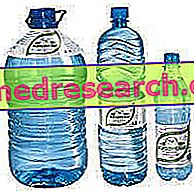What is Eliotherapy?
Heliotherapy is a therapeutic science based on exposure to sunlight for the treatment of ailments of various kinds.

The feeling of well-being and heat, induced by exposure to sunlight, is the result of a complex interaction that involves all physiological systems and all their different activities (after a "sun bath", for example, are perceived relaxation muscle and greater joint mobility).
Among the most important effects that heliotherapy favors in the skin, we recall the transformation of vitamin D into its active form (D3). The activation of vitamin D in its active component is the basis of the treatment against rickets, caused precisely by the lack of this vitamin.
Note: vitamin D deficiency leads to changes in the conformation of the bone tissue. The lack of this component causes pathological conditions such as rickets and bone fragility.
Warning!
The practice of heliotherapy requires caution, as it can lead to serious side effects. In fact, invisible ultraviolet radiation is also responsible for many unwanted skin changes. These same wavelengths of light can in fact cause sunburn or sunburn, skin aging and skin cancer. For these reasons, heliotherapy should be applied carefully, weighing the relative benefits, risks and alternatives as with any other medical therapy.
Effects of sunlight
The sun emits large amounts of energy into space: solar radiations are classified according to their characteristic wavelength (inversely proportional to the energy of the radiation itself). These emissions are spread over a wide spectrum of amplitude.
In addition to visible light (radiations perceived by the human eye), they are distinguished:
- infrared (IR): they conduct heat and remain on the surface layer of the epidermis
- ultraviolet (UV) rays : they produce an effect on the tissues and the metabolic system, they manage to reach the dermis.
The intentional direct exposure to sunlight allows therapeutic benefits to be obtained especially due to the presence of the ultraviolet component. The latter consists of 3 classes of radiation:
- GRAPES
- They promote the release of melanin from melanocytes and the oxygen-melanin interaction, which substantially increases skin pigmentation (tan).
- They can cause melanoma (skin cancer) and premature skin aging (faster than UV-B rays).
- Their effect is reduced by sunglasses and is hampered by protective clothing.
- UV-B
- They are potentially more harmful and carcinogenic than UV-A.
- They produce a stimulating action on the melanin neosynthesis.
- Activate the metabolism of vitamin D.
- They cause burns with more incidence than UV-A rays.
- Their effect is reduced by sunglasses (depending on the SPF, indicated sun protection factor)
- UV-C
- They are the most dangerous radiations and are shielded from the ozone layer in the earth's atmosphere (they do not generally reach the ground).
Background
The practice of exploiting natural sunlight for therapeutic purposes has a very ancient origin: in all cultures the sun represents energy, heat and life. Moreover, since its origins, man has empirically understood the effects of climatic factors on his health; we could therefore say that heliotherapy is a practice that has always belonged to medicine.
The ancient Greeks used this natural technique to treat skin sores and other skin diseases. Heliotherapy has been used in India, China and Egypt as a healing therapy for various diseases, including psoriasis. Even the ancient Romans used the exposure of the body to the sun and air to enjoy its benefits.
At the beginning of the twentieth century, some scientists assigned to the skin the role of a multifunctional organ and not only a protective "envelope" of our body.
Heliotherapy in tuberculosis sanatoriums
Heliotherapy was a component of the therapeutic offer of antituberculous sanatoriums, health facilities that received patients suffering from tuberculosis (TB) or lung diseases (chronic or convalescent), which could undergo climatic treatment here.
Over time, heliotherapy has been the subject of studies that investigated the biological actions produced by solar radiation, determining the effectiveness of exposure to natural sunlight and also documenting effects lasting over a year.
Note : the sun affects our daily life : it regulates the body's circadian rhythms; scans the sleep-wake cycle; affects mood in relation to light intensity.
Benefits
The biological and physiological interactions that affect the effects produced by sun exposure are:
- Calcium and vitamin D metabolism
- Melanin production
- Adjusting the sleep-wake rhythm
- Maintaining body temperature
- Action on some biological mechanisms that influence mood
The diseases that have the greatest beneficial effect from sun therapy are:
| Dermatological diseases | Psoriasis Vitiligo Acne Eczema | It stimulates the production of melanin, an anti-inflammatory action |
Osteo-articular diseases | Rickets Rheumatism Osteoporosis Arthrosis | Anti-inflammatory action, stimulation of Vitamin D production, calcium absorption and fixation in the bones |
Respiratory diseases | Bronchial asthma | |
Hematological and circulatory system diseases | anemia Lymphatic (increased volume of lymphatic organs as a response to disease or drainage of toxins) | |
Mood disorders | Depression, Anxiety | The sun's rays activate certain neurotransmitters (such as serotonin) in the brain, raising the mood (on brighter days we feel happy and active) |
Even those who enjoy good health can take advantage of the positive effects of heliotherapy. Exposure to sunlight:
- Activates the circulation and induces an effective oxygenation at tissue level (trophic effect)
- It stimulates the metabolism and the autonomic nervous system
- Promotes hematopoiesis (promotes the formation and maturation of the corpuscular part of the blood)
- Improves physical and mental efficiency
- Increases muscle capacity
- Facilitates the elimination of toxins through skin perspiration
Heliotherapy is contraindicated in case of:
- Hyperthyroidism: ultraviolet radiations indirectly stimulate the metabolism of the endocrine glands, which produce hormones that in predisposed subjects can favor the onset of disorders such as tachycardia or syncope (fainting).
- Capillary fragility and varicose veins: heat stimulates vasodilation
- Hypertension, arteriosclerosis, heart failure
- Chronic liver and kidney diseases
Therapeutic value of heat from the sun
Some skin appendages, the sweat glands, are stressed in the excretion of waste materials from our body. Therefore, the intervention of heat helps to regulate the hydrosaline balance and to lower the body temperature by evaporating the water contained in the sweat.
Heliotherapy and psoriasis
Heliotherapy has proved to be the most convenient therapy available to treat psoriasis. Short and regular exposure to the sun (up to 20 minutes, several times a week) slows the rapid turnover of skin cells that characterize psoriasis (a dermatological disease that causes thickened or plaque skin lesions).
Heliotherapy can help reduce or replace other treatments, such as topical ointments and creams, pills or injectable drugs. However, not all psoriasis patients are good candidates for heliotherapy.
Heliotherapy and phototherapy
Heliotherapy has proved so effective for psoriasis that it has promoted the spread of phototherapy, which uses artificial sunlight produced by specific devices. This alternative can effectively and safely replace exposure to sunlight in the winter months or in cold climates.



